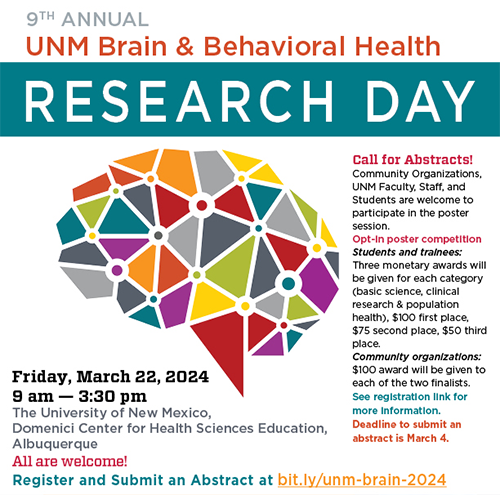Document Type
Poster
Publication Date
3-31-2023
Abstract
We have reported that the histamine H3 receptor (H3R) inverse agonist ABT-239 ameliorates prenatal alcohol exposure (PAE)-induced deficits in synaptic plasticity and learning. It has been reported that different H3R inverse agonists have variable affinities for also binding to Sigma-1 receptors (S1Rs), including ABT-239, which is roughly equipotent at both receptor types. Given this dual action of ABT-239 and other H3R inverse agonists on both H3Rs and S1Rs, we examined whether PAE would affect that actions of the more selective H3R inverse agonist JNJ5207852 compared to the specific S1R agonist PRE-084 on H3R receptor-effector coupling.
Radiohistochemical studies of [35S]-GTPgS (GTP) binding were conducted using sagittal brain sections from five-month-old control and PAE rat offspring. Sections were incubated in the presence of an EC80 concentration (500 nM) of the H3R agonist alpha-methylhistamine (aMH), in the absence or presence of increasing concentrations either JNJ-5207872 or PRE-084. In the absence of either agent, moderate PAE significantly increased aMH-stimulated GTP binding in dentate gyrus and cerebrocortical brain regions, as we reported previously. JNJ-5207852, dose-dependently inhibited aMH-stimulated GTP binding in a similar manner in both control and PAE rats. These results suggest that PAE does not affect the ability of H3R inverse agonists to inhibit H3R receptor-effector coupling. PRE-084 dose-dependently elevated H3R agonist-stimulated GTP binding in various brain regions. In contrast, PRE-084 reduced H3R agonist-stimulated binding to binding levels similar to controls in the absence of either drug. These results suggest that PAE reduces the ability of S1R agonists to modulate the function of H3Rs. Given that S1Rs act as chaperone proteins to enhance many different neurobiological processes including, NMDA receptor function, neurotransmitter release, hippocampal neurogenesis and learning, all of which are diminished in PAE rodents, these results suggest that PAE may diminish S1R modulation of many neurobiological processes involved in brain function and behavior.
Recommended Citation
Nelson, D E.; S Davies; and D D. Savage. "Effect of Prenatal Ethanol Exposure on Histamine H3 Receptor-Effector Coupling and Sigma-1 Receptor Modulation of Histamine H3 Receptor Function." (2023). https://digitalrepository.unm.edu/hsc-bbhrd/121




Comments
Supported by 1P50AA022534
Poster presented at the Brain & Behavioral Health Research Day 2023